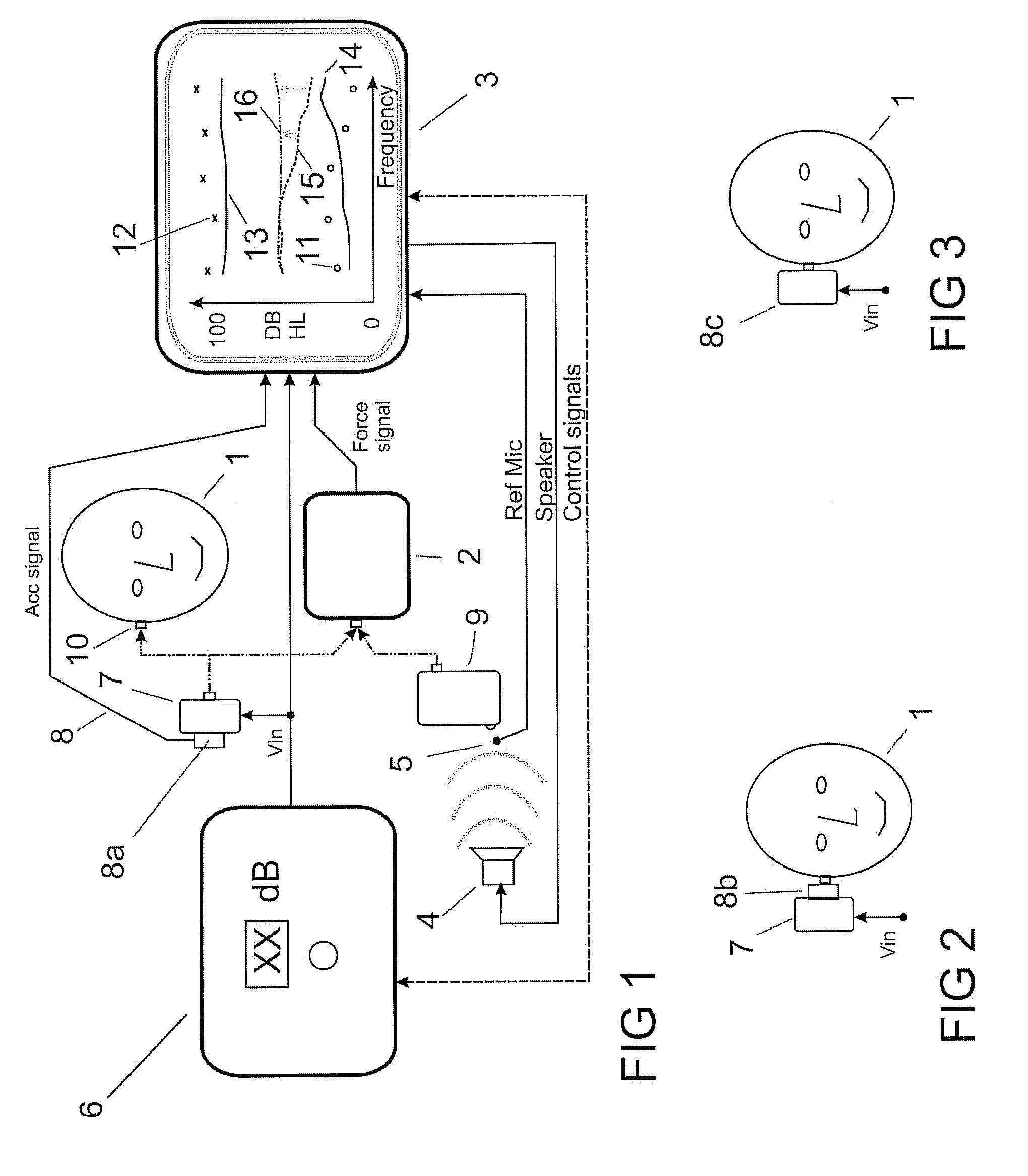Fitting and verification procedure for direct bone conduction hearing devices
a technology of hearing aids and fittings, applied in the field of fitting and verification procedures of direct bone conduction hearing devices, can solve the problems of not being able to provide valid and reliable verification procedures for direct bone conduction hearing aids, not being able to inform clinicians about speech aided audibility,
- Summary
- Abstract
- Description
- Claims
- Application Information
AI Technical Summary
Benefits of technology
Problems solved by technology
Method used
Image
Examples
Embodiment Construction
Definitions
Direct Bone Conduction Hearing Device:
[0015]Direct bone conduction hearing devices are defined as devices where the vibration transducer is rigidly attached to the skull bone without intervening soft tissues. These devices can be either percutaneous (i.e. using a skin penetrating abutment attached to a fixture integrated to the skull bone) or transcutaneous (where at least the driving side of the transducer is attached subcutaneously to the skull bone). Such subcutaneously placed transducers has an outer housing made of titanium.
Sound Pressure Levels (SPL):
[0016]When possible the Sound Pressure Level (SPL) is used as the objective measure where the SPL dB is referred to 20μ Pascal.
Acceleration Levels (A):
[0017]For bone conduction applications (hearing via the skull bone) Acceleration can be used as the objective measure where the A dB is referred to 1 m / s2.
Force Levels (F):
[0018]Sometimes the Force is used instead of Acceleration and the F dB is then referred to 1μ Newton...
PUM
 Login to View More
Login to View More Abstract
Description
Claims
Application Information
 Login to View More
Login to View More - R&D
- Intellectual Property
- Life Sciences
- Materials
- Tech Scout
- Unparalleled Data Quality
- Higher Quality Content
- 60% Fewer Hallucinations
Browse by: Latest US Patents, China's latest patents, Technical Efficacy Thesaurus, Application Domain, Technology Topic, Popular Technical Reports.
© 2025 PatSnap. All rights reserved.Legal|Privacy policy|Modern Slavery Act Transparency Statement|Sitemap|About US| Contact US: help@patsnap.com


